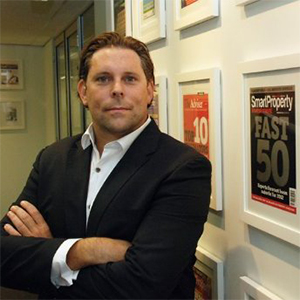BLOG: The one critical issue for all investors, and how to fix it
No matter if you have one or many properties in your portfolio, there’s one thing that you need to be careful of and keep a good eye on to make sure your portfolio doesn’t go under.

I’m talking, of course, about cash flow.
Without it, everything falls apart, as it allows you to stay in the game. Have you got enough money to pay the bills, first and foremost? And then how will you improve your cash flow position to allow you to accelerate your investing journey (which means buying more properties)? Or if you’re at the other side of the coin, if you’re looking to pay down debt or looking to retire your debt, you want to look at cash flow in terms of what you get, so it’s more money in your pocket.
For us it’s about improving the cash position of our portfolio. It’s a good portfolio. I ran through all the numbers in that podcast on the 22nd of January. Cash flow, however, was negative north of $55,000-plus every year before tax, so it costs a little bit to hold this portfolio, but it’s a growing portfolio. Obviously post-tax the numbers look a lot better.
But I’m a pretext man so I look at the cash flow it costs us or how much it costs us to hold this property portfolio. If I can minimise that as much as possible, I’m happy.
Recent recommendations and guidelines put in by APRA try and slow down rampant price growth in the market and, obviously, Sydney and Melbourne have seen significant growth. Other parts of Australia haven’t, and there’s an argument around that but the market has changed a little bit in terms of investor appetite for property.
There have been effects, depending on the market, in slowing down price growth in some markets which are a little bit negative. For us in Smart Property Investment and our portfolio, where we sit right now, we want to improve our cash flow position. We’ve run some numbers and done some science around our portfolio, and we’ve worked out that should we look to shift from variable rates to fixed rates, it would be a bit of work – shave about $25,000 a year off our repayments.
What we can do, and what you can do too, is to obviously pay this money out now so we can obviously cover the cost of holding this portfolio, irrespective of any interest rates. If we do have that cash flow discrepancy there, you’re saying that we can actually use that to go and buy more property. That’s cool.
The two options for us to improve our interest rate position – number one is just go to the lenders and say: “Hey, can we have a cheaper rate based on where we’re sitting right now?” Or number two we go to the lenders and say: “We’ll move from interest-only to fixed, and could we therefore have your fixed rate?”
If lenders don’t budge, and I’m annoyed enough, I can walk and that’s a particular pain in the arse, and the lender knows that.
However, they know there’s going to be a pressure point or a trigger point where there’s hassle and time and effort to refinance with another lender. We’ll get to a point where it’s commercially viable and therefore you do it.
There’s a middle world where you operate and where you’ve got to work out whether it’s easier to stay, negotiate and test the appetite of the lender to keep you as a customer or move on.
It’s an inexact science, and there’s a whole bunch of different reasons why you may or may not do this but that’s what you need to do. If you’re a serious investor, you’ve always got to be chasing cash flow efficiency.
For more on our portfolio, check out our recent update on the Smart Property Investment Show.
